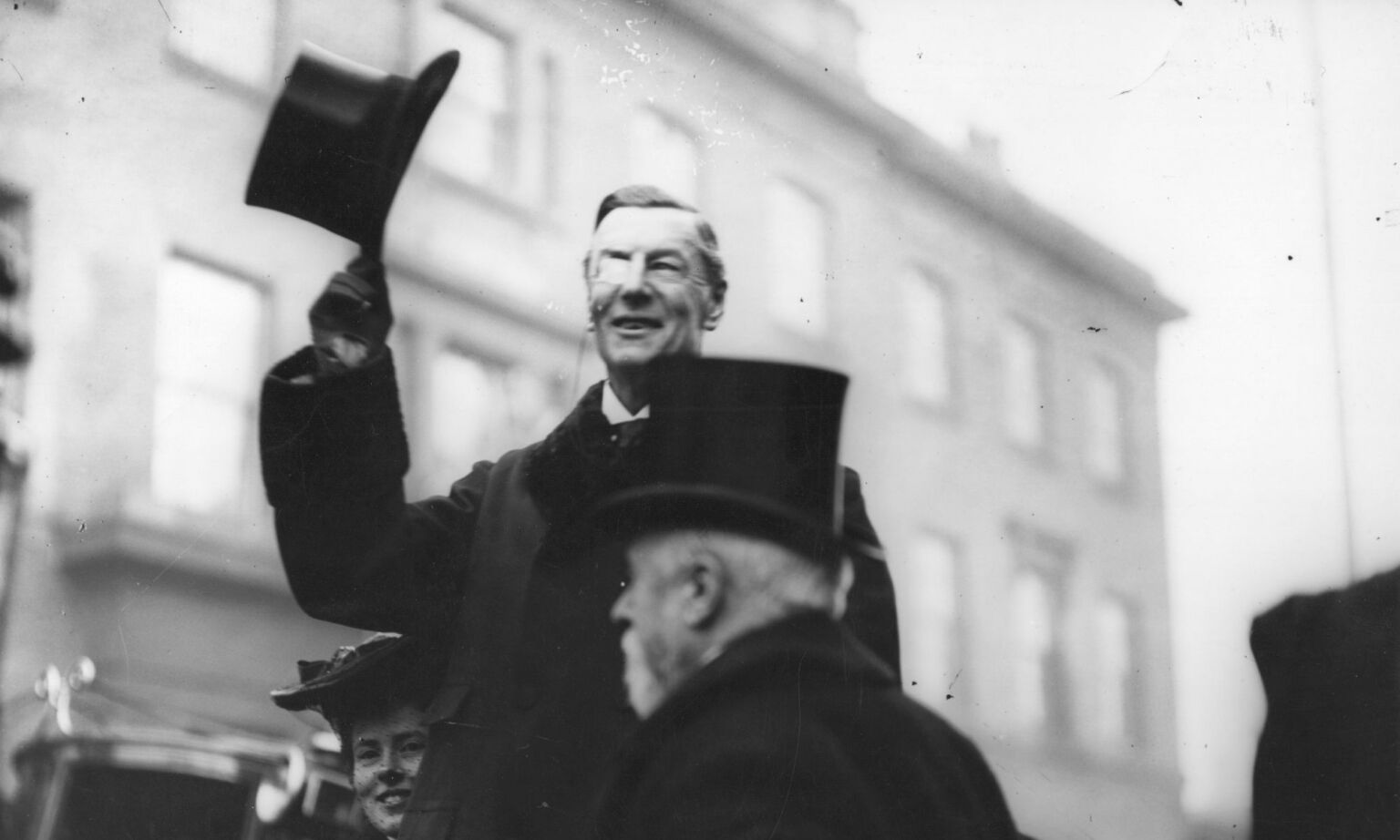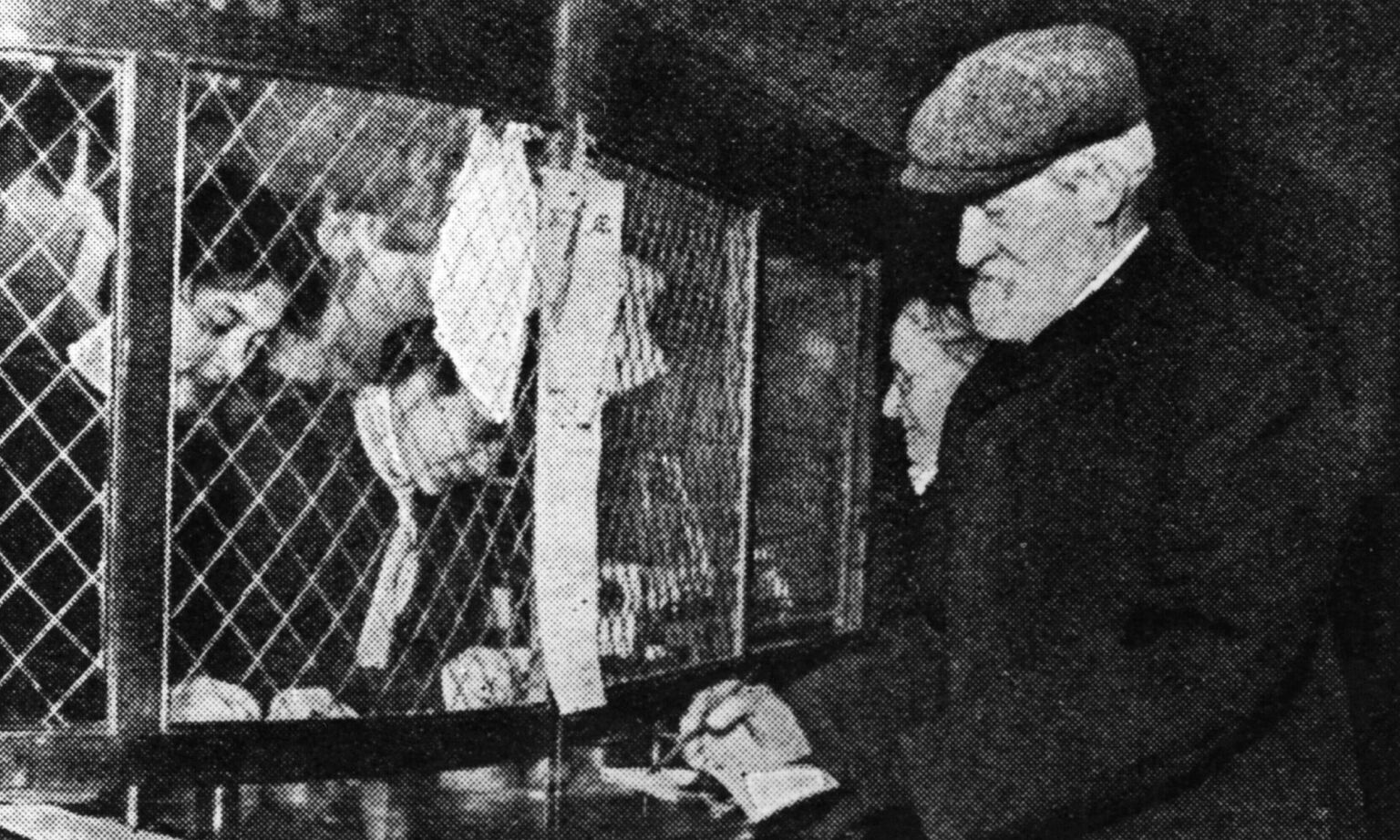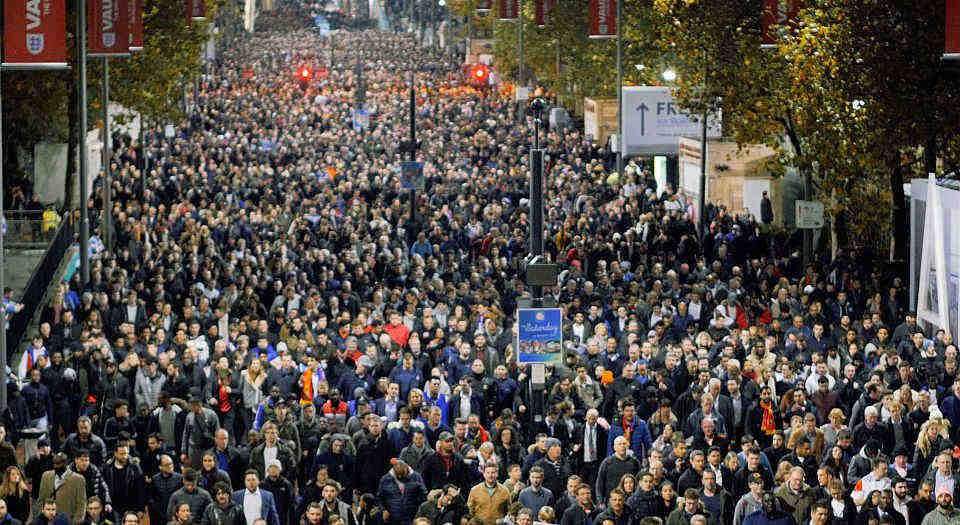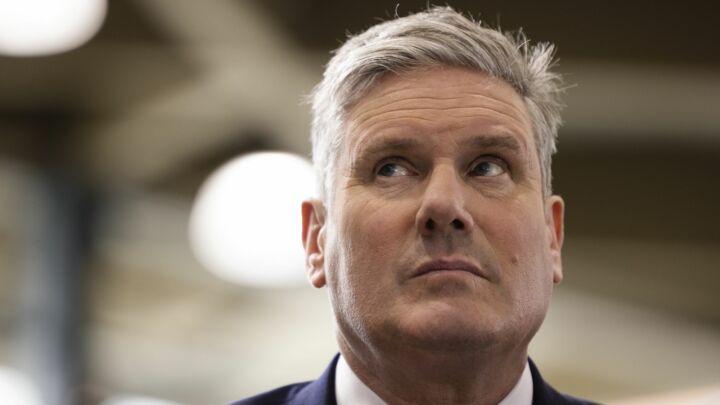
Long-read
Lessons from the last Tory rout
The 1906 ‘Liberal landslide’ was the Conservatives’ worst defeat… so far. What can it tell us about today?
Want to read spiked ad-free? Become a spiked supporter.
The Conservatives are facing their worst General Election defeat since 1906, when they won a mere 156 seats to the Liberals’ 399. Only three cabinet ministers survived. The then UK prime minister, AJ Balfour, lost his seat – so Rishi Sunak, if he suffers the same humiliation on Thursday night, will not be making history. Yet the Conservative Party bounced back, and four years later had caught up with the Liberal Party. It was the triumphant Liberals who were soon in decline, and four elections later were doomed to minor status.
Is this a good omen for today’s Tories? Not necessarily. The 1906 defeat was very different from the one that’s looming now. Then, the Conservatives lost seats more than votes: despite a seven per cent swing against them, they still won 43 per cent of the vote. A gain of only three percentage points by 1910 put them neck and neck with the Liberals, who then had to rely on the support of Irish nationalists and the new Labour Party to stay in power. The 1906 election is certainly no precedent for the unprecedentedly low voting share forecast to be won by the Conservatives this week – around 20 per cent, less than half their share in 1906. Party loyalties and party membership were far more solid then (the Conservative Primrose League alone had roughly two million members, compared with about 170,000 for the whole party today) and hence resilient parties could recover quickly.
Though in 1906 the Liberals triumphed, the previous General Election in 1900 had been an even greater Tory victory, with 402 seats and a 50 per cent share of the vote – a figure the party has only once exceeded since. The victory in this so-called Khaki Election, at the tail end of the Second Boer War, was due to an upsurge of patriotic Toryism, defeating a Liberal Party accused of being ‘pro-Boer’.
Serious historians are wary of facile parallels between the past and the present. But let’s try being facile for once, and see where it leads. Assume the Khaki Election was comparable with Boris Johnson’s 2019 victory (44 per cent of the vote), based on a similarly patriotic promise to ‘Get Brexit Done’. In both cases, international shocks and domestic demands soon created challenges for Lord Salisbury and his successor, Balfour, as they did for Johnson, Liz Truss and Rishi Sunak.
Following the unexpectedly difficult victory in South Africa, it seemed that the international order was shifting against Britain. The popular and irrepressible colonial secretary, Joseph Chamberlain, famously pronounced in 1902 that ‘the days are for great empires, and not for little states’. This axiom has since been used to justify European integration and Britain’s membership of the EU, but for Chamberlain it meant trying to turn the vast but disorganised British Empire into a super-state able to survive alongside the United States, Germany and Russia. The Boer War had also caused fears – much exaggerated – that the British population was ‘degenerating’, as a large proportion of volunteers in the war were not fit enough to fight. If this aroused hair-raising eugenic fantasies (mostly from the radical wing of the Liberals and oddball intellectuals in the new Labour Party), it also clearly required welfare spending. Chamberlain thought he had the answer: ‘imperial preference’, which meant imposing import tariffs on goods from outside the empire. The aims were to form an imperial single market as a step to integration, to protect British jobs threatened by German imports and also to raise money for welfare spending (‘Levelling Up’, shall we say) and an increased defence budget.

Chamberlain’s plan was the Tories’ downfall, splitting the party and galvanising the opposition. ‘All the old warhorses [were] snorting with excitement’, wrote Liberal leader Henry Campbell-Bannerman. It shows the risks in politics of trying to discard cherished myths. Chamberlain was defying one of the greatest: free trade. This dated back to the 1840s and the repeal of the Corn Laws, which had also shattered the then Tory Party and consigned it to a long period of opposition.
Free trade was the great progressive myth of Victorian Britain. The abolition of the Corn Laws – that is to say, of agricultural protectionism – was turned into a moral crusade by the progressive forces of the day, including religious dissenters, the anti-slavery movement, trade unions, women’s associations and peace campaigners. Free traders adopted the slogan ‘immediate abolition’ from the anti-slavery campaign.
Free trade was presented as not just an economic measure to reduce the cost of living (and keep wages down), but also as ‘the greatest revolution that ever happened in the world’s history’. As one children’s book of the time put it, the aim was that ‘everybody may… be joined together in love and trade, like one great family; so that we may have no more wicked, terrible battles, such as there used to be long ago’. The dogma was that commercial freedom would inevitably bring political freedom, international harmony, the dissolution of reactionary empires, the liberation of serfs and slaves, the end of the ‘antagonism of race, and creed and language’, and the abolition of ‘gigantic armies and great navies’, which states would no longer need and, in the absence of revenue from tariffs, be unable to afford.
This utopian vision was not unlike a bigger, more brightly coloured version of the Remainer ideal of ‘Europe’, one that right-thinking people instinctively support. In the eyes of Remainers, the EU is not a ruthless and inefficient trade bureaucracy, but the epitome of a multicultural civilisation of progress, peace, harmony and prosperity. The Tories in 1906 had the temerity to challenge the progressive vision of free trade, as they did (rather accidentally) with Brexit after 2016. The Liberal Party marshalled the arguments familiar since the 1840s. ‘Big loaf’ versus ‘little loaf’ was a catchy Liberal slogan (free trade would provide the big loaf). The campaign was effective, shaping folk memory of ‘the bad old days’ when the poor starved to enrich the squires. It was at least as successful as the Remainer campaign has been over the past eight years in persuading much of the population that Brexit is not only un-progressive and vulgar, but has also hit their pockets.
But were either of these powerful myths true? Few if any other countries thought that free trade was a panacea. The Chinese had to be forced into it by the Opium Wars in the mid-19th century – enthusiastically supported by Hong Kong governor Sir John Bowring, a whole-hearted progressive and a fanatical free trader. Britain’s major economic partners – France, Germany and the United States – kept tariffs to protect their farmers (the EU’s Common Agricultural Policy is the modern version) and to foster their new industries. We, in contrast, maintained a dogmatic policy of unconditional free trade, allowing access to our markets from competitors who excluded British goods from theirs. It was taken for granted that this showed not only Britain’s intellectual and moral leadership, but also that it served British interests. However, free trade probably made Britain somewhat poorer, causing a permanent decline in agriculture and handicapping emerging industries. Britain became overwhelmingly dependent on imported food, and unhealthily reliant on a few old-fashioned exports such as textiles and coal. Similarly, membership of the EU Single Market raised the cost of living, arguably shrank British industry (encouraging production to shift to cheaper parts of the EU), while free movement held wages down and widened the pool of the long-term ‘left behind’.
But deeply held myths resist contradiction, especially when facts are contestable and hard to grasp. So, effective exploitation of myths (‘Hands off the people’s bread’) in the face of a confused and divided Conservative Party gave the Liberals their majority in 1906, and will do the same for Labour in 2024. The Tories were half-hearted in support of Chamberlain’s tariff policy. The present government has doomed itself by failing to defend Brexit, its only historic achievement.
The Liberal government of 1906, led first by Sir Henry Campbell-Bannerman and then HH Asquith, had a remarkable record. It was, said Churchill many years later, the best government he ever served in (he defected to the Liberals before later rejoining the Tories). It pioneered old-age pensions, free school meals, child protection, accident compensation, labour exchanges and national insurance. It tamed the House of Lords and introduced wealth, land and inheritance taxes. But it could not solve the Irish question, stumbled over women’s suffrage and, fatally, it could neither prevent nor keep Britain out of the First World War.

It was the war, not Tory recovery, that wrecked the Liberal Party and ended its long hegemony. It had been the main party of government of the long Victorian era, and the matrix for British progressive politics. It split under the strains of war. Only a Liberal rump remained. Others allied with the Conservatives. Much of the progressive intelligentsia moved into the Labour Party, until then the pliant junior auxiliary of liberalism. If the trade unionism of the factory workers and miners provide the muscle and the votes, it was the middle- and upper-class progressives – the Webbs, the Benns, the Cripps, the Attlees, the Croslands, the Blairs, the Starmers – who have consistently steered the ship. Now the miners are gone, but with the support of the white-collar masses of teachers, local-government employees and NHS workers (more numerous than the miners at their peak), Labour hardly needs manual workers any more.
The simplest pattern of British politics is the shifting see-saw of satisfied conservatives against dissatisfied progressives; the southern core against the periphery; the traditionalists against the iconoclasts; the taxpayers against the tax spenders. Unlike the European right – invariably fragmented by ideological quarrels and often alarmingly radical – the Conservative Party has succeeded by reassuring and defending the interests of the relatively contented core, especially when these felt threatened by taxation or just annoyed by the iconoclasts, whether puritanical temperance crusaders in Victorian times or transgender zealots today. The conservative side has always included a substantial working-class element (the ‘Red Wall’ is only the latest version). And the culture war, in its numerous manifestations, has always been important: religious affiliation was long the clearest determining factor of political allegiance. The Conservatives won most easily when the ‘progressive’ forces were divided, as they usually were and still are, by ideology and often by class.
After recovering from their 1906 disaster and seeing the Liberals self-destruct, the Conservatives were in power for most of the interwar period (a poisoned chalice), but they only once exceeded their 1900 vote share of 50 per cent – in 1931, with 55 per cent. Neither Labour nor Liberal has ever won 50 per cent of the vote in the 20th century.
The differences today are glaring. It is the conservative forces that are divided by ideology (Brexit vs Rejoin) and class (Home Counties vs the Red Wall), and for the moment, the progressives are sufficiently united by a reassuring Labour Party which, unlike the Liberals in 1910 to 1914, can spurn outside support from Liberal Democrats, nationalists and Greens.
Are there any crumbs of comfort for the Conservatives? Most obviously, unlike in 1906, turnout is likely to be low, and support for Labour is far shallower than for the then Liberals, who had deep roots in churches, social clubs and moderate trade unions. All across the democratic world, the old mass parties are dead, and electoral support is fickle: triumph and disaster may indeed both be imposters. Perhaps because of their lack of ideology, insurgent parties of the right have never lasted long – who remembers the ‘Vigilante’ candidate who won 29 per cent of the vote in Finsbury in 1918? Protest voters have long been reabsorbed into the capacious bosom of the Conservative Party. Will Reform be any different? In contrast, Starmer’s Labour, once its laurels have faded, will have rival ‘progressives’ – Lib Dems, Greens and the SNP – snapping at its heels. So the Tory defeat may not be terminal.
Of course, to survive, the Tories will need to have a coherent vision on which they agree, win back their disillusioned grassroots supporters and find a way of appealing to younger voters. This may now seem impossible, and certainly far more difficult than after 1906. But in other parts of Europe, a youthful right is in the ascendancy and the moderate left is moribund. The Conservative Party that sought to be ‘the heir to Blair’ has sunk. Is another form of popular Toryism slouching towards Westminster still yet to be born?
Robert Tombs is the author of This Sovereign Isle: Britain In and Out of Europe, which is published by Penguin.
Pictures by: Getty.
To enquire about republishing spiked’s content, a right to reply or to request a correction, please contact the managing editor, Viv Regan.








Comments
Want to join the conversation?
Only spiked supporters and patrons, who donate regularly to us, can comment on our articles.